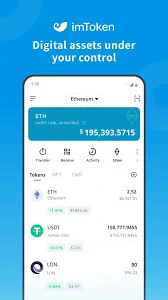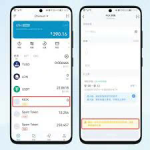# Adding Tokens to Wallets: A Comprehensive Guide
Adding tokens to a digital wallet is an essential process for users engaged in cryptocurrency and blockchain technology. As digital currencies proliferate and new assets emerge, understanding how to add tokens to a wallet enhances a user’s ability to manage and interact with their investments. This article provides a comprehensive look into the methodologies, types of wallets, and implications of adding tokens, providing depth for both novice and experienced users.
## Understanding Digital Wallets
Digital wallets serve as the interface through which users interact with cryptocurrencies and blockchain assets. These wallets store users’ keys—cryptographic functions that allow individuals to interact with blockchains and facilitate transactions. There are typically three types of digital wallets to consider: hot wallets, cold wallets, and hardware wallets.
### Hot Wallets
Hot wallets are connected to the Internet and provide immediate access to cryptocurrency exchanges. They are convenient for everyday transactions but can pose security risks, as they are vulnerable to hacking and online theft. Examples include mobile wallets and web wallets, which allow users to add tokens through simple interfaces.
### Cold Wallets
Cold wallets, on the other hand, are not connected to the Internet, making them significantly more secure. They are often used for long-term storage of cryptocurrencies. Common forms include paper wallets and USB devices. Although adding tokens to cold wallets necessitates a few extra steps compared to hot wallets, it provides peace of mind against online threats.
### Hardware Wallets
Hardware wallets blend characteristics of both types, offering a physical device designed specifically for secure storage of cryptocurrencies. With a dedicated software interface, users can manage their wallets offline while having the option to connect to the Internet when necessary. Adding tokens to hardware wallets involves using specific applications tailored to the wallet.
## Types of Tokens
Understanding the types of tokens is crucial before one can effectively add them to a wallet. Tokens can be categorized into various types, including utility tokens, security tokens, and non-fungible tokens (NFTs).
### Utility Tokens
Utility tokens provide holders access to a product or service within a platform. They are typically used within specific ecosystems, allowing for transactions among users and incentivizing behaviors on the platform. A widely recognized example is the Basic Attention Token (BAT), which is central to the Brave browser ecosystem.
### Security Tokens
Security tokens represent ownership in an underlying asset, such as shares in a company or real estate. They are regulated by securities laws and are often associated with Initial Coin Offerings (ICOs). The introduction of security tokens has added legal dimensions to token ownership.
### Non-Fungible Tokens (NFTs)
NFTs have surged in popularity due to their uniqueness and indivisibility. Each NFT is distinct and often represents ownership of digital art, music, or even virtual real estate. Ethereum-based platforms like OpenSea facilitate the buying, selling, and transferring of NFTs.
## The Process of Adding Tokens to a Wallet
Adding tokens to a wallet can vary significantly based on the type of wallet, the token, and specific blockchain protocols. However, the process can be generally categorized into a few key steps.

### Step 1: Selecting the Right Wallet
Before adding a token, selecting the appropriate wallet is critical. Wallets must support the token’s blockchain. For example, if you’re dealing with ERC-20 tokens, you would need an Ethereum-compatible wallet like MetaMask, MyEtherWallet, or Trust Wallet.
### Step 2: Acquiring the Token
Tokens are often acquired through exchanges, airdrops, or direct transfers from other wallets. When using exchanges, users should select one that lists the desired token.
### Step 3: Generating an Address
Once a compatible wallet is chosen, users need to generate a receiving address for that token. Most wallets provide clear instructions to create an address, which is simply a string of characters unique to that user’s wallet.
### Step 4: Transferring the Token
With the receiving address ready, users can proceed to transfer tokens from an exchange or another wallet. This involves entering the receiving address and the amount of tokens to transfer, often accompanied by a transaction fee.
### Step 5: Confirming the Transaction
After initiating the transfer, it may take time for the transaction to be confirmed on the blockchain, depending on the network’s congestion. Users can monitor the transaction using block explorers, which provide real-time information on the status of the transaction.
## Choosing the Right Blockchain
Choosing the appropriate blockchain on which to add tokens can significantly affect transaction efficiency, speed, and security. The most popular blockchains for token creation include Ethereum, Binance Smart Chain, and Solana.
### Ethereum
Ethereum is known for its extensive development framework, allowing developers to create decentralized applications (dApps) and smart contracts. ERC-20 tokens are the most common tokens built on this platform, providing various utility features.
### Binance Smart Chain

Binance Smart Chain offers lower transaction fees and faster confirmation times compared to Ethereum. This blockchain has gained popularity among users looking for cost-effective alternatives while maintaining similar functionalities through BEP-20 tokens.
### Solana
Solana has emerged as a high-performance blockchain capable of supporting high throughput and low latency. This blockchain caters to decentralized finance (DeFi) and NFT projects, providing a robust infrastructure for developers and users alike.
## Security Considerations
The importance of security cannot be overstated when adding tokens to wallets. Users must adopt essential security practices to ensure their assets are protected against potential threats.
### Enabling Two-Factor Authentication
Using two-factor authentication (2FA) provides an additional security layer. By requiring a secondary form of verification, such as a text message or authenticator app code, users can deter unauthorized access attempts.
### Keeping Private Keys Secure
Private keys are critical for blockchain transactions, granting control over digital assets. It’s essential to store private keys securely, either offline or using secure software solutions that minimize exposure to potential threats.
### Regularly Updating Wallet Software
Keeping wallet software up to date helps defend against vulnerabilities. Regular updates typically include patches for identified security flaws, ensuring continuous protection against the latest threats.
### Beware of Phishing Attempts
Phishing scams have become increasingly common in the crypto space. Users should stay vigilant and avoid accessing wallets or exchanges through unsolicited links. Always verify the authenticity of websites before entering sensitive information.
## Troubleshooting Common Issues
While the process of adding tokens to a wallet is generally straightforward, users may occasionally encounter issues. Here are some common problems and solutions.
### Transaction Delays
If a transaction appears stalled, users can explore the status using a block explorer. If the transaction is unconfirmed for an extended period due to high network congestion, users may need to consider submitting the transaction with a higher gas fee, if applicable.
### Address Mismatches
Sending tokens to an incorrect address can result in irreversible loss. Always double-check the receiving address before initiating the transfer. Some wallets provide address verification features to minimize such errors.
### Unsupported Tokens
Attempting to send tokens not supported by the chosen wallet can lead to complications. Always confirm the wallet’s compatibility with the token before attempting to add it. If a user mistakenly sends unsupported tokens, they may lose access unless the wallet has recovery options.
## The Future of Token Management
As the cryptocurrency space continues to evolve, so too does the landscape of token management. Innovations in blockchain technology, regulatory considerations, and user demands will shape how users interact with their crypto assets.
### Decentralized Finance (DeFi)
The rise of DeFi has transformed how tokens are used, moving beyond simple transactions into lending, yield farming, and trading. As DeFi platforms become more mainstream, users will seek integrated solutions to manage their diverse token portfolios efficiently.
### Enhanced Wallet Features
Future wallets are likely to incorporate more features, such as improved user interfaces, integrated DeFi capabilities, and advanced security protocols. Enhanced functionality will facilitate broader adoption of cryptocurrencies among mainstream users.
### Regulatory Changes
As governments worldwide establish regulatory frameworks for cryptocurrency usage, ensuring paper trails and compliance may become necessary. This could lead to wallets embedding regulatory compliance features that automate reporting and tracking.
## Conclusion
Adding tokens to a wallet is a foundational skill for anyone venturing into cryptocurrencies. Understanding the types of wallets, the various types of tokens, and the associated processes can empower users to navigate the blockchain landscape effectively. By prioritizing security and keeping abreast of innovations in the space, users can maximize the benefits of their digital assets in an increasingly interconnected world.


